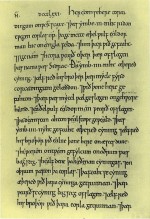 Tree ring data indicates that sometime around 774 or 775 A.D., an intense burst of radiation
hit the Earth. What was its source? Scientists were uncertain, but it
was probably a supernova. Unfortunately, there were no records of such
event.
Tree ring data indicates that sometime around 774 or 775 A.D., an intense burst of radiation
hit the Earth. What was its source? Scientists were uncertain, but it
was probably a supernova. Unfortunately, there were no records of such
event. But Jonathon Allen, a biochemistry student at University of California, Santa Cruz, realized that researchers needed to consider how people in the Eighth Century A.D. would have understood the appearance of a supernova in the sky:
His search found the eighth-century entries in the Anglo-Saxon Chronicle at the Avalon Project, an online library of historical and legal documents hosted by Yale University in New Haven, Connecticut. Scrolling down to the year ad 774, Allen found a reference to a “red crucifix” that appeared in the heavens “after sunset”. [...]
“It made me think it’s some sort of stellar event,” Allen says. Furthermore, he notes, the redness might indicate that the source was hidden behind a dust cloud dense enough to scatter all but a small amount of red light. Such a cloud might also prevent any remnants of the proposed supernova being seen by modern astronomers.

No comments:
Post a Comment